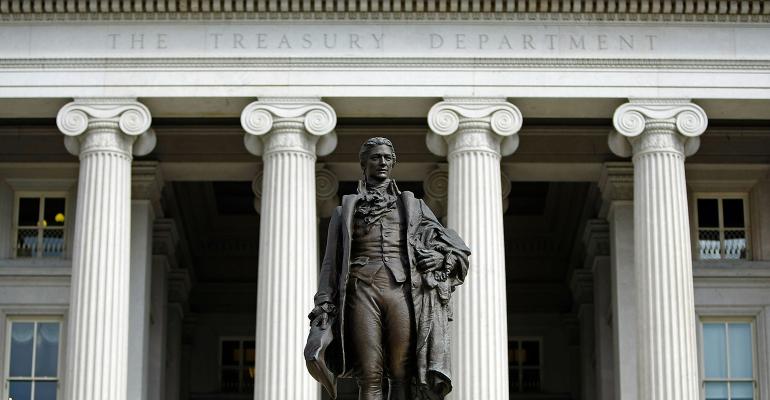The U.S. Department of the Treasury recently released The American Families Plan Tax Compliance Agenda, which contains detailed descriptions of President Joe Biden's concerns and compliance initiatives. The Compliance Agenda focuses primarily on initiatives targeting the causes of the current tax gap. The tax gap is the difference between the amount of taxes legally owed and the amount actually collected. The Treasury estimates that the tax gap stood at $600 billion in 2019 and could balloon to approximately $7 trillion over the next 10 years if no changes take place.
The Compliance Agenda notes that while withholding from wage earners functions well, it’s the investments available to the wealthy and the sophisticated that present a problem. The Internal Revenue Service faces a unique challenge with respect to cryptocurrencies, which it believes "poses a significant detection problem by facilitating illegal activity broadly including tax evasion."
Proposed Initiatives
The Treasury has proposed a number of initiatives to combat the tax gap and to aid the IRS in detection and enforcement of tax crimes. While some of the initiatives are tried and tested methods, like increasing the number of IRS staff, cracking down on rogue tax preparers and focusing on reporting compliance, a number of initiatives break ground on the technology side. These initiatives include:
- Providing $80 billion in additional funding to the IRS over the next decade, of which a portion would be dedicated to modernizing software and information technology systems;
- Modernizing the IRS to develop "innovative machine learning that can be deployed to better identify suspect tax filings...";
- Expanding the IRS’ information technology and data analytic capacity;
- Dedicating resources to address the growth of cryptocurrencies and exchanges, an area that hasn’t been significantly developed from the enforcement perspective; and
- Hiring and training agents dedicated to complex enforcement activities.
For further background, it’s worth noting that the IRS has focused on using technology and data for decision making in tax enforcement for years. In 2016, as a result of IRS reorganization, the prior Office of Compliance Analytics (OCA), which was created in 2011, and the Research, Analysis and Statistics unit (RAS) were combined into the organizational unit for Research, Applied Analytics and Statistics (RAAS). Among its goals is to continue to improve the risk profiles of taxpayers and of issues to determine audits and tax investigations as well as to share information and analytic techniques with IRS offices. From actual cases and reports, it’s been clear for years that the IRS uses technology and increasingly artificial intelligence to perform analysis of social media as well as internet addresses, emailing and electronic payment patterns and other public and commercial data. The resulting metadata has been sorted in category types and attributes – more than 32,000 such categories and more than 1 million such attributes as reported in academic publications already years ago. The data is used in machine learning across neural networks, statistical and agent-based modeling and relationship analysis. The resulting proprietary analytics programs and pattern recognition algorithms can identify potential refund fraud, detect taxpayer identity theft and tax non-compliance issues. With the proposed additional funding, the IRS will become even more efficient in identifying and investigating tax non-compliance.
Ramifications
Because the technology is still being developed, we don’t know to what extent it will be used once operational. As Treasury made clear its position that the tax gap stems from wealthy and sophisticated individuals, one should expect over the next few years the following:
- Increased scrutiny on crypto related transactions;
- Audits based on data generated by algorithms predicting compliance issues; and
- Increased compliance focus on high-earning tax payers.





